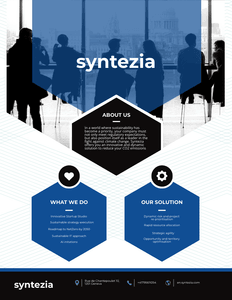



transform and perform
- Engagements
- Services
- Services catalogue
- Events
- Methods and tools
- kickstart esg 4 hours
- Discover our ecosystem
- Mediation circles
- Funding
- Franchise
- Contact
- Contact us
- Blue economy
- Press room
- Historical
- HR
- Sustainability reports
- …
- Engagements
- Services
- Services catalogue
- Events
- Methods and tools
- kickstart esg 4 hours
- Discover our ecosystem
- Mediation circles
- Funding
- Franchise
- Contact
- Contact us
- Blue economy
- Press room
- Historical
- HR
- Sustainability reports



transform and perform
- Engagements
- Services
- Services catalogue
- Events
- Methods and tools
- kickstart esg 4 hours
- Discover our ecosystem
- Mediation circles
- Funding
- Franchise
- Contact
- Contact us
- Blue economy
- Press room
- Historical
- HR
- Sustainability reports
- …
- Engagements
- Services
- Services catalogue
- Events
- Methods and tools
- kickstart esg 4 hours
- Discover our ecosystem
- Mediation circles
- Funding
- Franchise
- Contact
- Contact us
- Blue economy
- Press room
- Historical
- HR
- Sustainability reports

Syntezia Civil Security
Our contribution and approach to a safer Europe
Horizon Europe Cluster 3
- User-centric approach: Living lab tools and methods emphasize involving end users and stakeholders throughout the research and innovation process. By engaging users in the development and testing of security and digital solutions, the consortium can gain valuable insights into their needs, preferences, and expectations. This user-centric approach ensures that the proposed solutions align with real-world requirements, leading to increased user acceptance and adoption.
- Co-creation and collaboration: Syntezia Living lab fosters collaboration between different stakeholders, including researchers, industry partners, public authorities, and end users. Through co-creation activities, such as workshops, focus groups, and participatory design sessions, the consortium can work closely with these stakeholders to collectively ideate, refine and validate innovative security and digital solutions. This collaborative approach enhances the relevance, feasibility, and effectiveness of the proposed projects.
- Testbed for experimentation: Syntezia Living lab can provide a real-world testbed environment for evaluating the performance and impact of security and digital solutions. The consortium can leverage the existing infrastructure, resources, and networks of living labs to conduct experiments, simulations, and pilot studies. This allows for iterative testing, validation, and optimization of the proposed solutions, ensuring their practical viability and scalability.
- Data collection and analysis: Living labs enable the collection of rich, real-time data on user behavior, interactions, and experiences. The consortium can leverage this data to gain insights into user needs, usage patterns, and potential security vulnerabilities. By analyzing the data collected from our living lab experiments, the consortium can make informed decisions, refine their proposals over time, and identify areas for further improvement.
- Validation and impact assessment: Living labs provide a platform for validating the effectiveness, efficiency, and societal impact of security and digital solutions. Through rigorous evaluation methodologies, such as user
surveys, interviews, and performance metrics, the consortium can assess the performance of their proposed projects and measure their impact on security and digital transformation. This evidence-based approach
strengthens the credibility and competitiveness of the consortium's Horizon Europe proposal. - Policy and regulation insights: Living labs often involve collaboration with public authorities and policymakers, providing an opportunity for the consortium to gain insights into relevant policies, regulations, and ethical
considerations related to security and digital technologies. By engaging with policymakers, the consortium can ensure that their proposals align with the European Union's strategic objectives and contribute to the
development of responsible and trustworthy security and digital solutions.
Overall, our Syntezia livinglab tools and methods can enrich the consortium's Horizon Europe Cluster 3
proposal by promoting user-centricity, collaboration, experimentation, data-driven decision-making, and evidence-based validation. By incorporating these elements, the consortium can enhance the quality, relevance, and impact of their research and innovation projects in the field of Security and Digital.
Contribute to civil security
Syntezia living lab can contribute to civil security in several ways, in particular to:
- Develop new technologies and security solutions: Living labs can be used to test new technologies and security solutions in a real-world environment. This helps collect valuable data and feedback that can be used to improve solutions before they are deployed at scale.
- Improve the coordination of security services: Living labs can be used to improve the coordination of security services. This can be done by allowing different security agencies to collaborate and learn from each other.
- Building community resilience: Living labs can be used to build community resilience. This can be done by raising awareness of risks in communities and helping them develop crisis response plans.
Here are some concrete examples of use for civil security:
- test a new fire detection system. The system was installed in an actual apartment and data was collected on its effectiveness.
- improve coordination between firefighters and police. The two agencies worked together to develop common emergency response protocols.
- raise awareness among residents of a community about flood risks. Residents participated in evacuation drills and learned how to prepare for flooding.
The Syntezia living lab, its methods and its powerful tools can be used to improve civil security. By continuing to develop solutions, we can create safer and more resilient communities.






